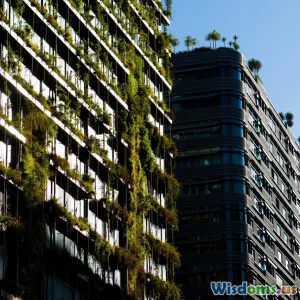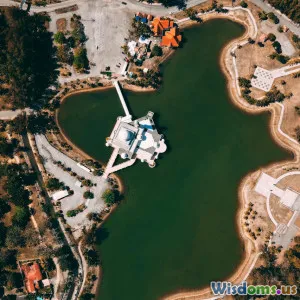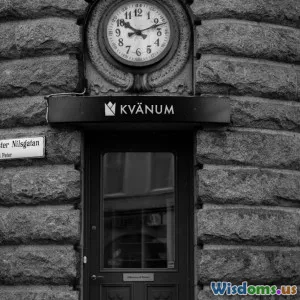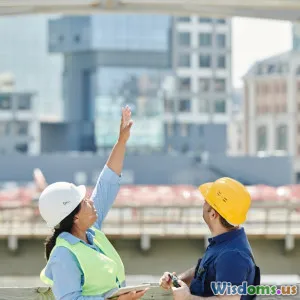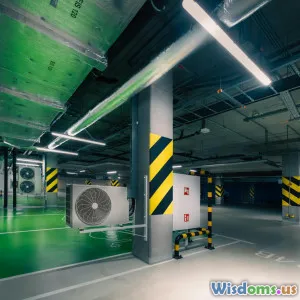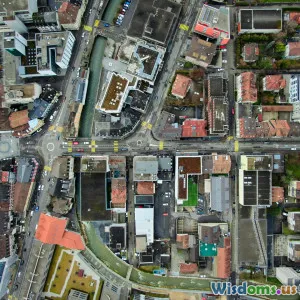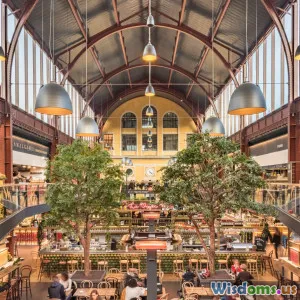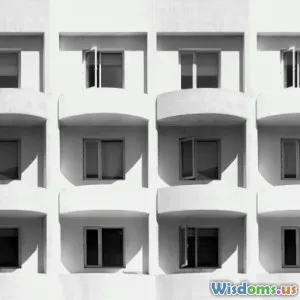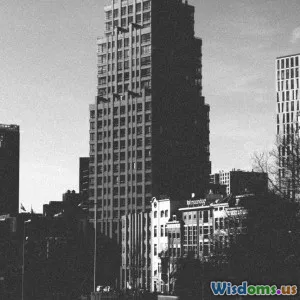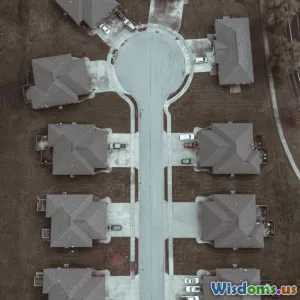
Building Community Through Design
10 min read Explore how architecture and urban design foster community connection and engagement. (0 Reviews)
Building Community Through Design: Architecture & Urban Design
Creating a sense of community is often a central goal for urban designers and architects. At its core, community relies on connection—between individuals, their surroundings, and each other. As cities grow and evolve, the role of design becomes ever more crucial in shaping how neighborhoods feel alive, safe, and inclusive. This article delves into the importance of community-driven design in architecture and urban planning and outlines practical examples and strategies for fostering community engagement and connection through thoughtful design.
The Power of Place: Understanding Community Dynamics
Defining Community
At its most basic, community is defined as a group of people living in close proximity, but it encompasses much more than mere geography. Community includes shared interests, mutual support, emotional connections, and sometimes a common history. Therefore, urban design must transcend simple aesthetics or functionality, aiming to cultivate spaces where relationships can thrive often initiating a stronger overall social fabric.
The Relationship Between Design and Community
The physical environment influences human behavior significantly. Research shows that certain design choices can lead to increased social interaction. According to the Environmental Design Research Association, innovative urban designs can foster more significant community engagement and interaction by creating recognizable gathering spots. For instance, social spaces such as parks, plazas, and streetscapes, when designed thoughtfully, can be transformative, prompting residents to meet, collaborate, and engage purposefully.
Key Principles of Community-Centric Design
1. Accessibility and Inclusivity
Universal Design Principles
Producing inclusive environments means addressing the needs of all demographics—seniors, children, and differently-abled individuals. The American Institute of Architects illustrates this through several case studies emphasizing considerations such as ramps, signage, and the layout of facilities to be ADA-compliant. The construction of the Centre for Aging and Inclusion in San Antonio, Texas is emblematic of this principle. Designed to serve seniors while keeping them connected to young people, everything from wide doorways to gym and leisure spaces promotes accessibility and intergenerational interaction.
2. Creation of Shared Spaces
Public Areas as Connection Points
Vital to building community is the emphasis on public space, which serves as the social glue in urban environments. Conceptualized as active venues—think The High Line in New York City or the Plaza Mayor in Madrid—these shared spaces afford residents opportunities to gather, play, and connect positively. A 2023 community survey published by the Urban Land Institute showed that neighborhoods with adequate public spaces saw 40% higher rates of community satisfaction compared to those lacking.
3. Multi-Functional and Adaptable Design
Modern architects are increasingly designing multipurpose spaces, allowing venues to morph as per community needs. The Klyde Warren Park in Dallas is a successful case study; its design incorporates a space for food stalls, game areas, yoga zones, and well-manicured lawns all in one locale, turning an unused highway into a vibrant urban retreat. This adaptability even fosters unforeseen interactions—events can be organized at a moment's notice, connecting various community members seamlessly, exemplifying flexibility in functions and purpose.
4. Engaging Local Characteristics
Cultural Customization
Communities are often rich with unique cultural characteristics and histories. Integrating local art, values, and history into architectural design lends character to urban spaces, enhancing residents' sense of belonging. The Civic Center Plaza in Los Angeles is a striking example, utilizing a blend of contemporary design and local cultural elements to create a space that feels reflective of Los Angeles’s diverse population.
5. Sustainability as Community Building
Green Design
Sustainable architecture directly links to community welfare. Incorporating eco-friendly practices promotes not only environmental stewardship but also social cohesion by providing collaborative business and leisure opportunities. For example, The Edge in Amsterdam is recognized as one of the most sustainable office buildings in the world, featuring green roofs that can serve as community spaces while providing locally sourced food, energy, and heat; addressing issues relevant to its occupants fosters a stronger corporate community ethos.
Engaging the Community in Design
Feedback loops and Participatory Planning
Involving locals in the planning process is vital for cultivating genuine community spaces. A participatory design reflects the voices of those who inhabit a space, leading to popular public consensus. Projects in places like Milan, Italy, have successfully harnessed this strategy through public workshops, enabling directly nested discussions about community needs in urban initiatives like the Strade Aperte initiative, encouraging vibrant public dialogues.
Creating Community Champions
Cultivating local “champions” to advocate for designs—individuals invested in sustaining community-centric initiatives—can lead to long-term success. For example, community members enriched the Project for Public Spaces in Melbourne, Australia, utilizing engaging public relations campaigns and regular feedback events that keep them interested and active participants.
Revitalizing Existing Spaces
Sometimes, rather than building new spaces, revitalizing existing ones can yield substantial results. The transformation of the Svento Place in Astoria, New York, underscores this. What was once a neglected area has now become a stunning gather point for food trucks, performance art, and games; it's an ideal reflection of residents’ needs, solidifying community bonds anew.
Case Studies: Successful Models of Community Through Design
1. The Village Format in Freiburg, Germany
Freiburg, often labeled as the “Environmental Capital of Germany,” exemplifies a successful integration of community-driven design. Countdown neighborhoods have prioritized conserving land, providing essential social facilities, and promoting eco-friendly transportation networks. As a result, 60% of people use the public transport system, which in turn fosters supportive living communities.
2. Superblocks of Barcelona, Spain
Barcelona has embarked on an ambitious redesign strategy through its Superblocks initiative, which focuses on reclaiming street space for pedestrians by limiting vehicle traffic. This reconfiguration has radically transformed the urban fabric, allowing social interactions to flourish in formerly traffic-choked regions, raising community ties, and offering various activities for the public.
3. The 606 Trail in Chicago, Illinois
An exemplary case of transforming an abandoned elevated railway into The 606 Trail buttresses community connectivity, public art installations, and numerous access points, highlighting civic pride. Not only does this project serve cyclists and pedestrians, it also includes community gardens and events, linking multiple neighborhoods together and redefining Chicago's urban ecosystem altogether.
Conclusion: The Future of Community-Driven Design
The role of architecture and urban design in building communities cannot be overstated. As cities continue to grow and grapple with challenges related to density, accessibility, and inclusion, community-centered design principles offer a rejuvenating pathway towards more significant human connection and social cohesion. By placing community needs at the forefront, urban planners and architects can ensure that civic spaces serve as heartbeats within the city—nourishing, supporting, and celebrating the lives encapsulated within them. As we shape the public spaces of today, let us envision a future where everyone feels seen, heard, and connected.
Through thoughtful engagement in each project's design phase and cultivating a sense of ownership among community members, achieving truly communal spaces is not just possible, but essential.
--
Rate the Post
User Reviews
Popular Posts










